#Nature.Com
Explore tagged Tumblr posts
Text
"Kristan Childs, a therapist in Sebastopol, California, agrees. “They need permission to feel,” she observes. “Some think if they allow themselves to feel, it’ll be like falling into a pit of despair they can never get out of. But almost always, the opposite happens,” she says. “When they see other people feeling the same way, it actually lifts the burden of aloneness.” And some even feel inspired to take collective action, she says." In the current generation of scientists, Gatti had to learn how to shift her mindset in her daily practice to avoid burnout. Similarly to Kalmus, she uses climate grief as a fuel to keep sounding the alarm. “The least I can do is to make noise and learn to speak a language everyone understands — so they become conscious that we must change at the micro and macro levels,” she says. “This is a huge opportunity for humanity to evolve.”
#Climate Change#Climate Crisis#Climate Goals#Protect The Planet#There Is No Planet B#Climate Change Reporting#Climate Journalism#Covering Climate Crisis#Our Home In Space#Fossil Fuel Caused Climate Change#Clean Energy Now#Climate Activists#Climate Activism#Nature.com#climate grief
11 notes
·
View notes
Text
When people spout anti science bullshit, just remember that we eliminated a strain of influenza!
5 notes
·
View notes
Text
Breaking Ice, and Helicopter Drops: Winning Photos of Working Scientists
Nature’s Annual Photography Competition Attracted Stunning Images From Around the World, Including Two Very Different Shots Featuring the Polarstern Research Vessel.
— By Jack Leeming | 23 April 2024

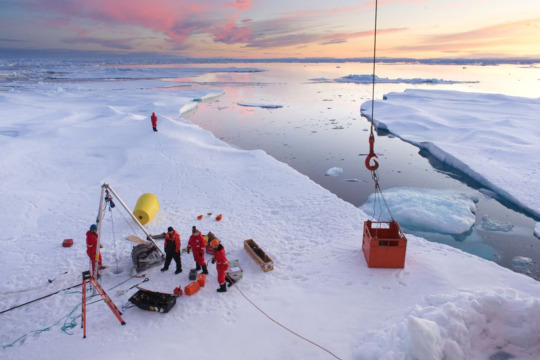
Glaciologist Richard Jones captured the moment a crew member on RV Polarstern prepared to rescue a measuring device trapped in ice.
Nature’s Annual Photography Competition Showcases Stunning Images From Around the World. By Jack Leeming. This image, taken on top of the ice breaker research vessel Polarstern, shows the delicate process of retriev ing an instrument called a CTD (short for conductivity, temperature, depth) that had become trapped under sea ice off the coast of northeastern Greenland. CTDs, which are anchored to the sea floor, measure how ocean properties such as salin ity and temperature vary with depth. At some point, the sea ice had closed over the top of this one, forcing the Polarstern to skirt carefully around the equipment, breaking the ice to rescue it from the freezing ocean.
��You’re crashing into ice and breaking through it. So it wasn’t particularly calm sail ing for the majority of the trip,” remembers Richard Jones, who took the image in Septem ber 2017 and is the winner of Nature’s 2024 Working Scientist photography competition. His research aims to improve estimates of the rate at which ice is being lost from the world’s glacial ice sheets. Jones, a glaciologist at Monash University in Melbourne, Australia, highlights the photo graphic contrast between icebreaker and ice that he’d become used to in his five weeks aboard the Polarstern. “All you really see is
blue and white. And sometimes that might feel pretty monotonous, but the colours from the CTD instrument and the orange of the crane contrast the scene and also complement it quite nicely.” We received more than 200 entries this year from researchers working around the world. The winner and the four runnersup (highlighted on the following pages) were selected by a jury of Nature staff, including three of the journal’s picture editors. All will receive a prize of £500 (US$620), in the form of Amazon vouchers or a donation to charity, as well as a year’s subscription to Nature.
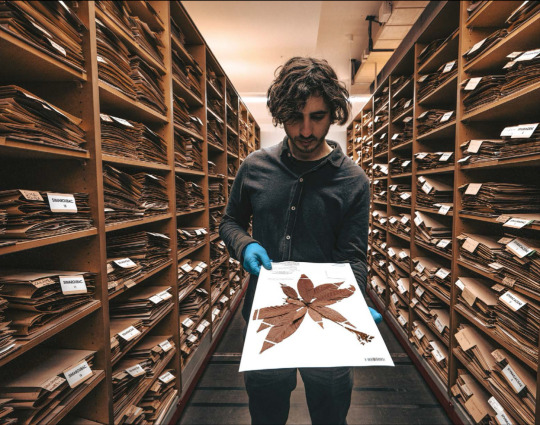
Work/Careers! Library Ofleaves! PhD student Kim Castro took this photo of her colleague, postdoctoral researcher Luiz Leonardo Saldanha, in a herbarium that they both work in regularly. It's shared between the University of Zurich and the Swiss Federal Institute of Technology (ETH) in Zurich. Both Castro and Saldanha investigate the medicinal plants of the Amazon at the Department of Systematic and Evolutionary Botany at the University of Zurich, although the two have very different approaches: whereas Saldanha investigates their chemical diversity, Castro looks at how the plants are perceived by Indigenous communities in the Amazon, specializing in how the plants smell. A herbarium, Saldanha says, is "like a library - but instead of books, there are plants here". Saldanha posed with this particular sample (Palicourea corymbifera, collected in 1977) because it comes from his home country, Brazil, but is used by the Indigenous Desano people in Colombia as a medicinal herb. "So it creates a commonality between South American countries," he says.

“Only 130 of These Birds 🦅 Remain On Earth. A Single Mosquito Bite Can Kill a Kiwikiu." Reaching the beak Conservation biologist Ryan Wagner snapped this photo of field biologist Sonia Vallocchia feeding a recently caught kiwikiu (Pseudonestor xanthophrys), in January this year. It was taken on Haleakala volcano on the Hawaiian island of Maui. Wagner, a PhD student at Washington State University Vancouver, was on an expedition to the island as a science communicator, hoping to raise awareness of the plight of the endangered birds. "Only 130 of these birds remain on Earth," explains Wagner. "Their numbers have crashed due to avian malaria, which is spread by invasive mosquitoes. As climate change warms the island, mosquitoes have advanced upslope into the high-elevation refuges where native birds survive. A single mosquito bite can kill a kiwikiu." He hopes that ornithologists such as Vallocchia, who works for the Maui Forest Birds Recovery Project in Makawao, will help to save these birds by bringing some of them (by helicopter) to the Maui Bird Conservation Center, also in Makawao. There, they will be treated for malaria and join a captive breeding programme, he says.

Mountain Drop-off! In this dramatic image, taken from below the still-spinning, deafening blades of a military helicopter, scientists shelter with their equipment after being dropped off at the top of a remote mountain in northern Amazonia. They are taking part in a biodiversity-research expedition to Serra Imeri, an isolated mountain range that rises through the forest canopy near the border of Brazil and Venezuela, in November 2022. "A total of 14 scientists and dozens of military support personnel took part in the expedition, which lasted for 11 days and resulted in the discovery of several new species of amphibians, reptiles, birds and plants," says photographer Herton Escobar, a science journalist who works with the scientists pictured, at the University of São Paulo in Brazil.
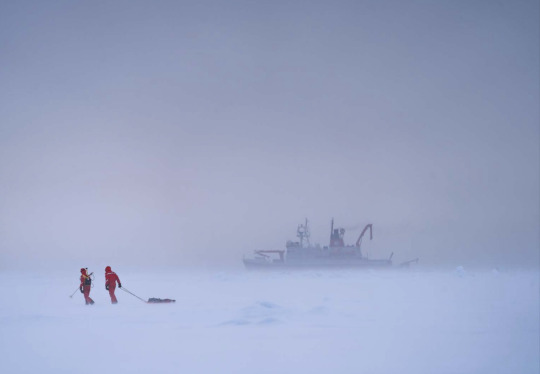
Go With The Floe! Emiliano Cimoli, a remote-sensing scientist at the Institute for Marine and Antarctic Studies at the University of Tasmania, Australia, took the second photograph featuring the research vessel Polarstern in this year's collection of winning images. Here, Carolin Mehlmann and Thomas Richter, mathematicians at the University of Magdeburg, Germany, are measuring the depth of snow across a giant ice floe drifting in the middle of the Arctic Ocean. The image was taken during a two-month voyage organized by the Alfred Wegener Institute, based in Bremerhaven, Germany, in August 2023. The goal of the expedition was to evaluate interactions between the ice physics, biology, hydrography, biogeochemistry and biodiversity of the Arctic ecosystem, from the sea ice to the sea floor.
#Nature.Com#Nature’s Annual | Photography | Competition#Stunning Images | Around the World 🌎#Polarstern Research Vessel 🚢#Winning Photos#Working Scientists
0 notes
Text
"Using the latest equipment, the US$7-million GreenDrill project succeeded this year. It drilled through 509 metres of ice at a site called Prudhoe Dome, and pulled up 7.4 metres of frozen sediment and rock."
0 notes
Text
Garbage Incineration: What are we Waiting For?
Are you for or against garbage incineration? I am a huge proponent of the theory and practice, so encouraged to hear it is being discussed here in Ottawa. It has been proven to be efficient and successful in many advanced countries around the world, including Switzerland, Norway, Belgium, France, Denmark, and the USA. Canadian cities with success in waste-to-energy include Durham-York and…

View On WordPress
#Allan Hubley#bandaid fix#councillor#David Brown#Durham York Energy Centre#Durham-York#Inciner8#MordorIntelligence#Nature.com#waste-to-energy#Western Investor#WTE
0 notes
Text
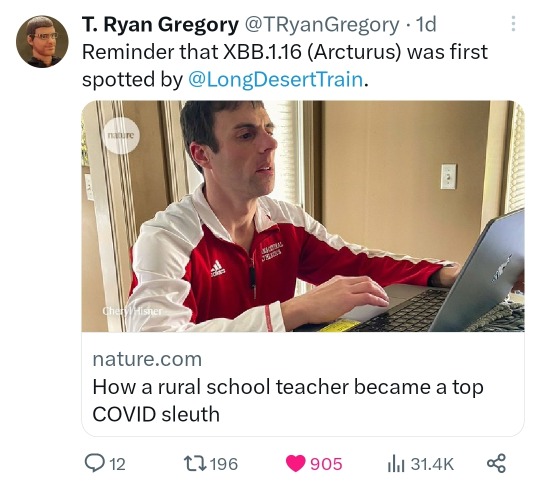
https://www.nature.com/articles/d41586-023-01047-4
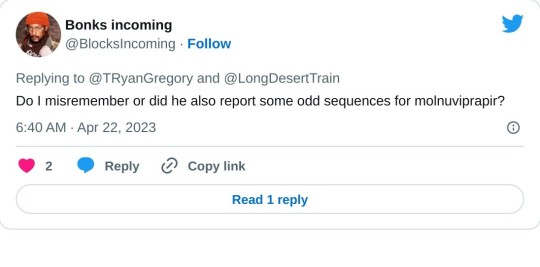

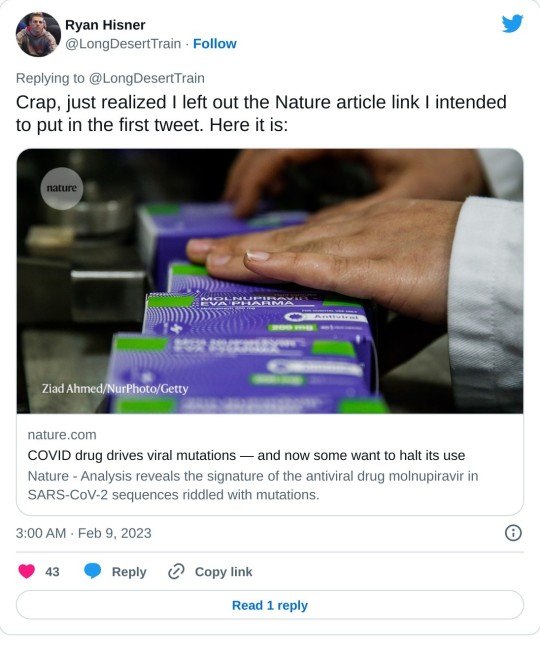
#Covid -19#Covid 19#Covid#Arcturus variant#Arcturus#XBB.1.16#Ryan Hisner#LongDesertTrain#Nature.com#T. Ryan Gregory#Public Health
1 note
·
View note
Text
oh scientific american ily <3
#chaos whispers#when they reprint nature magazine articles and you gotta pay like 50 quid for them individually on nature.com#but i paid a dollar for 90 days of sciam and now i get them ALL for free 😭#if anyone wants the link to that offer pls lmk i think i still have it around here somewhere!
0 notes
Text

1 note
·
View note
Photo

Power companies must adapt to climate change now. Here’s how researchers can help https://www.nature.com/articles/d41586-023-02443-6
0 notes
Text
these ppl deadass trying to bring back phrenology
#i hate this so much#shitpost#r/#nature.com get fucked i hope the 'researches' of this shit get their careers and lives ruined truly#phrenology#so called#artificial intelligence#deep learning#<- these are such bogus terms btw#pseudo science#eugenics#racism#<- b/c you know where this is going#technology#mass surveillance
0 notes
Text
"Two scientists who faced racist and misogynistic abuse from social media trolls outline some strategies needed to tackle it, and how employers should respond." "“It used to be that I would receive that hate via letters or emails, or phone calls, or official complaints to my university. And those certainly still arrive. But now the deluge of hundreds of hateful comments in a single day that the internet facilitates, whether it is on Twitter, or LinkedIn, or Facebook, or even Instagram, the volume is just 100 times more than it would be without the Internet.”" - Atmospheric scientist Katharine Hayhoe
#Atmospheric scientist Katharine Hayhoe#Nature.com#internet trolls#online hate#online scientific abuse#Katharine Hayhoe#online misogynistic abuse#online abuse of scientists
0 notes
Text

A new Carboniferous edaphosaurid and the origin of herbivory in mammal forerunners
Abstract
Herbivory evolved independently in several tetrapod lineages during the Late Carboniferous and became more widespread throughout the Permian Period, eventually leading to the basic structure of modern terrestrial ecosystems. Here we report a new taxon of edaphosaurid synapsid based on two fossils recovered from the Moscovian-age cannel coal of Linton, Ohio, which we interpret as an omnivore–low-fibre herbivore. Melanedaphodon hovaneci gen. et sp. nov. provides the earliest record of an edaphosaurid to date and is one of the oldest known synapsids. Using high-resolution X-ray micro-computed tomography, we provide a comprehensive description of the new taxon that reveals similarities between Late Carboniferous and early Permian (Cisuralian) members of Edaphosauridae. The presence of large bulbous, cusped, marginal teeth alongside a moderately-developed palatal battery, distinguishes Melanedaphodon from all other known species of Edaphosauridae and suggests adaptations for processing tough plant material already appeared among the earliest synapsids. Furthermore, we propose that durophagy may have provided an early pathway to exploit plant resources in terrestrial ecosystems.
Read the paper:
A new Carboniferous edaphosaurid and the origin of herbivory in mammal forerunners | Scientific Reports (nature.com)
211 notes
·
View notes
Text
Twenty things I wish I’d known when I started my PhD
- according to Nature.com
Maintain a healthy work–life balance by finding a routine that works for you. It’s better to develop a good balance and work steadily throughout your programme than to work intensively and burn out. Looking after yourself is key to success.
Discuss expectations with your supervisor. Everyone works differently. Make sure you know your needs and communicate them to your supervisor early on, so you can work productively together.
Invest time in literature reviews. These reviews, both before and after data collection, help you to develop your research aims and conclusions.
Decide on your goals early. Look at your departmental guidelines and then establish clear PhD aims or questions on the basis of your thesis requirements. Goals can change later, but a clear plan will help you to maintain focus.
“I don’t need to write that down, I’ll remember it” is the biggest lie you can tell yourself! Write down everything you do — even if it doesn’t work. This includes meeting notes, method details, code annotations, among other things.
Organize your work and workspace. In particular, make sure to use meaningful labels, so you know what and where things are. Organizing early will save you time later on.
It’s never too early to start writing your thesis. Write and show your work to your supervisor as you go — even if you don’t end up using your early work, it’s good practice and a way to get ideas organized in your head.
Break your thesis down into SMART (specific, measurable, attainable, relevant and timely) goals. You will be more productive if your to-do list reads “draft first paragraph of the results” rather than “write chapter 1”. Many small actions lead to one complete thesis.
The best thesis is a finished thesis. No matter how much time you spend perfecting your first draft, your work will come back covered in corrections, and you will go through more drafts before you submit your final version. Send your drafts to your supervisor sooner rather than later.
Be honest with your supervisor. Let them know if you don’t understand something, if you’ve messed up an experiment or if they forgot to give you feedback. The more honest you are, the better your relationship will be. Helping your supervisor to help you is key.
Back up your work! You can avoid many tears by doing this at least weekly.
Socialize with your lab group and other students. It’s a great way to discuss PhD experiences, get advice and help, improve your research and make friends.
Attend departmental seminars and lab-group meetings, even (or especially) when the topic is not your area of expertise. What you learn could change the direction of your research and career. Regular attendance will also be noticed.
Present your research. This can be at lab-group meetings, conferences and so on. Presenting can be scary, but it gets easier as you practise, and it’s a fantastic way to network and get feedback at the same time.
Aim to publish your research. It might not work out, but drafting articles and submitting them to journals is a great way to learn new skills and enhance your CV.
Have a life outside work. Although your lab group is like your work family, it’s great for your mental health to be able to escape work. This could be through sport, clubs, hobbies, holidays or spending time with friends.
Don’t compare yourself with others. Your PhD is an opportunity to conduct original research that reveals new information. As such, all PhD programmes are different. You just need to do what works for you and your project.
The nature of research means that things will not always go according to plan. This does not mean you are a bad student. Keep calm, take a break and then carry on. Experiments that fail can still be written up as part of a successful PhD.
Never struggle on your own. Talk to other students and have frank discussions with your supervisor. There’s no shame in asking for help. You are not alone.
Enjoy your PhD! It can be tough, and there will be days when you wish you had a ‘normal’ job, but PhDs are full of wonderful experiences and give you the opportunity to work on something that fascinates you. Celebrate your successes and enjoy yourself.
This was part of my required readings this week and I have never related to an academic text more so I had to share.
Full article by Lucy Taylor here!
39 notes
·
View notes
Text
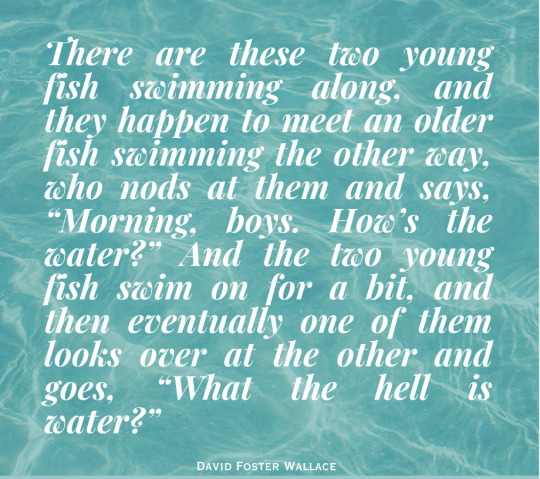











on being a fish instead.
this is water by david foster wallace // boundface on pinterest // edith sitwell // a hat full of sky by terry pratchett // peta.org // nature.com - buckyballs in space solve 100-year-old riddle // the gunslinger by stephen king // deepseanews.com - pufferfish skeleton // octopus’s garden by the beatles // the creation of adam by michelangelo // janet fitch
put together on canva xx
#my first ever web weave!#inspired by @cityofconnecticut#fishblr#web weaving#marine animals#marine life#marine biology#fish#aquatic life#aquarium#baby fish#quotes#collage#the beatles
30 notes
·
View notes
Text
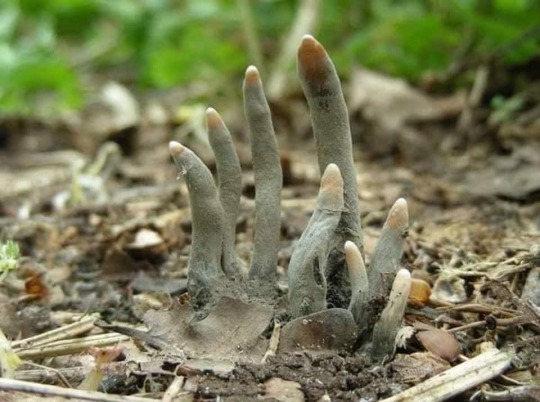
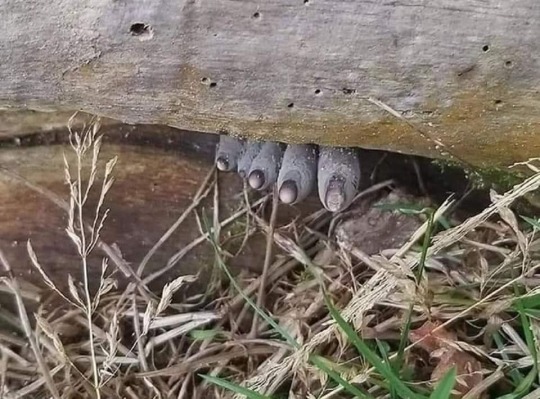
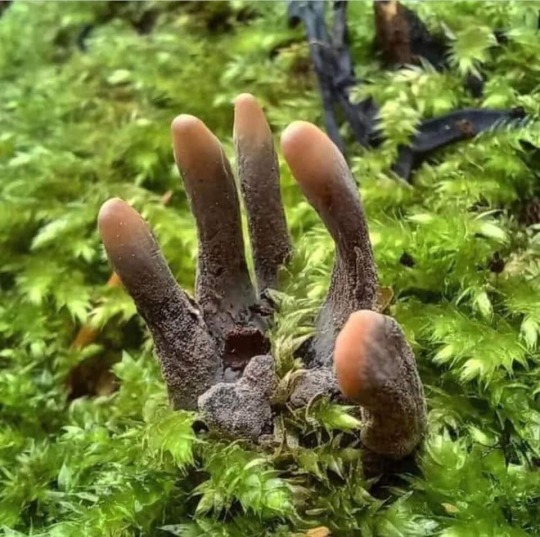

Commonly known as dead man's fingers, Xylaria polymorpha, is a saprobic fungus. It is a common inhabitant of forest and woodland areas in North America and Europe. It usually grows from the bases of rotting or injured tree stumps and decaying wood.
🤚🏽Learn more at https://www.first-nature.com/fungi/xylaria-polymorpha.php
(Kim Wright)
#appalachian#appalachian mountains#north carolina#appalachian culture#western north carolina#appalachia#the south#nc mountains#mcdowell county#mcdowellcounty#fungus#dead man's fingers
46 notes
·
View notes
Note
helloo!! sorry if this is a question u get a lot, do you know any good website to keep up with marine animals news?? and for research??
It's a good question to ask, especially in a world where you have to sift through a lot of misinformation surrounding science (and, to set a good example, I will now be adding references in the notes for my information, particularly if I mention specific studies).
For news, Science.org, SciTechDaily, NewScientist and Nature.com are all websites I have used for keeping up to date with global marine biology news/research although it's always possible to use any news site as long as you ensure they are reliable (e.g. do they include references to research for further reading? does the content of the referenced research match the claims they make in the article? is the site likely to be biased towards a particular viewpoint?)
For research, there are tons of databases storing centuries of marine biology research. Many people like to recommend Google Scholar and I always think it's a good starting point for beginning scientific research but you can't always trust it to be a reliable tool.
ResearchGate, Wiley Online Library, ScienceDirect are all good places for peer-reviewed scientific articles (and I'm sure the people over at @jstor will assure you of the strength of their database too) although, keep in mind, you might have to search through many other databases if you want to dodge paywalls to access full articles.
If anyone else has any other suggestions, feel free to mention them in the notes!
18 notes
·
View notes